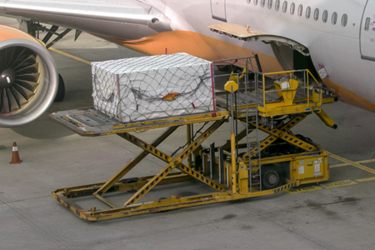A New Model Approach To Drug Shortage Prevention
A conversation with Diane Hustead, Merck & Co.

Preventing global drug shortages requires careful supply chain management, innovative manufacturing techniques, and proactive approaches from drug companies. Though designing prevention protocols may feel like trying to navigate an unforeseeable future, there are tools available to help assist manufacturing and risk management teams.
In 2014, the International Society for Pharmaceutical Engineering (ISPE) gathered a team of industry experts to write and release the ISPE Drug Shortages Prevention Plan; in 2023, they released the revised and adapted Drug Shortages Prevention Model. Per ISPE, the model, “serves as a guide to help prevent drug shortages by providing quality, regulatory, and technical recommendations for the pharmaceutical manufacturing industry.”
In the following Q&A, we caught up with Diane Hustead, Executive Director, Regulatory Affairs, Merck & Co., Inc., and Chair of the ISPE Drug Shortages Initiative Team, who helped write the Drug Shortages Prevention Model.
Hustead provided her insight into how the climate of the pharmaceutical industry has changed since 2014, and how drug companies can build robust risk management plans to mitigate drug shortages, account for global supply chain challenges, and adapt to shifting regulatory expectations. The interview has been edited for clarity and length.
Compared to the 2014 ISPE Drug Shortages Prevention Plan, the first difference we notice is in the title. How did we transition from "plan" to "model?"
Hustead: Early in the drafting of this update, we recognized the term plan was too specific for the guidance provided in this publication. Developing a plan typically means mapping out detailed steps regarding what to do to achieve a goal.
You can certainly build a detailed product-specific plan for drug shortage prevention based on the guidance and references, however, the ISPE Drug Shortages Prevention Model (DSPM) is not a template or a narrative with prescriptive stepwise instruction on creating product-specific prevention plans. Instead, the DSPM is structured to put a spotlight on 12 performance areas in pharmaceutical manufacturing that contribute to holistic drug shortage prevention.
For each of these 12 performance areas, the DPSM describes a model for how manufacturers may explore various opportunities or complete activities at the product, operational, and organizational levels to achieve consistent reliability of supply. It cites key ISPE resources to aid in that journey.
The 2014 plan still appears relevant, with considerable discussion on quality and root cause. Can you discuss areas where it fell short in addressing challenges posed by recent natural disasters and the pandemic?
Hustead: A lot has happened since 2014. Innovation has largely prompted the modernization of the original Drug Shortages Prevention Plan. The original content is still important, relevant, and foundational to the current DSPM. The modernization effort restructured and expanded the content to additionally spotlight: advanced manufacturing, life cycle management, sustainability, digital solutions, supply and distribution resilience, and evolving regulations.
An equally important driver for the update has been a shift of focus from individual manufacturer challenges to the global nature of supply chains and market-wide supply chain vulnerabilities. This focus quickly surfaced after natural disasters and the pandemic. Greater awareness of the potential ramifications of market-wide supply chain vulnerabilities has intensified discussion around ensuring supply chain resilience, the importance of timely shortage reporting, and exploring possible benefits of increased transparency to support predictive analytics at the market level.
With increasing focus on building greater supply resiliency and the success of increased communication and collaboration with health authorities through the pandemic, there has also been an evolution of the regulatory landscape that has introduced:
- greater opportunities for regulator engagement regarding innovation,
- more active industry innovation forums,
- greater visibility of long runway for obtaining global regulatory approvals and momentum for improvements through global cooperation, like the International Coalition of Medicines Regulatory Authorities (ICMRA) is exploring.
Furthermore, in the last decade there has been increased awareness and exploration of solutions for root causes of drug shortages that are beyond the manufacturers’ control, such as financial pressures, market dynamics, geopolitical issues, social media pressures, etc. Addressing these topics is an important element to future success, but largely beyond the scope of ISPE and not covered in the DSPM to any significant degree.
How has our understanding of risk assessment evolved during the pandemic?
Hustead: Risk assessment and risk management planning for product availability has been a longstanding business practice in the industry and has had increasing attention from regulators as an essential element to continuity of supply. The pandemic introduced a sense of urgency from both industry and regulators in elevating risk management performance to meet the increased challenges for supply resiliency in an interconnected, constrained global market.
From that pressure to do better and do it now, holistic, end-to-end risk management for the purposes of ensuring patient access or product availability is increasingly top of mind. In general, historical best practices are expanding with:
- less-siloed risk management planning activities through connecting stakeholders and data, (i.e., reviewing product risk profiles including financial, supply chain/distribution, environmental, or quality risks),
- greater attention to risk management at different altitudes (i.e., product, operational, and organization levels),
- scenario planning focused on supply challenges in a global market,
- increasing awareness that prioritization of risk management activities for product availability in alignment of impact to the patient is essential.
The recently updated ICHQ9 (R1) and corresponding training materials include new guidance specifically focused on risk management for product availability. ICHQ9 continues to be a foundational risk management resource for ISPE and we are currently collating and modernizing ISPE guidance on risk management based on the ICHQ9 (R1). This new ISPE guidance will be a comprehensive review of best practices and regulatory expectations and include the expanded best practices for risk management for product availability as noted above.
In the last decade, artificial intelligence seems like the most obvious emerging technology to strengthen supply chains. What other technologies or processes do we now have that were absent in 2014?
Hustead: Many! Some of the key examples are:
- predictive analytics for better forecasting of pharmaceutical demand or identification of supply chain vulnerabilities,
- digital transformation (e.g., ISPE Pharma 4.0, Blockchain)
- the right data in the right place, structured, standardized, and contextualized,
- increasing data scientist roles,
- encouraging a data mindset/culture,
- advanced technology that drives supply chain reliability through manufacturing agility (e.g., distributed manufacturing, modular manufacturing, pod manufacturing, continuous manufacturing),
- sustainability measures that will generate platforms for more reliable supply through conservation of resources, manufacturing efficiency, and sustainable distribution and logistics operations.
If I'm a small biotech company looking to fortify my supply chain — and my position in the global supply chain — what areas of the model I should focus on?
Hustead: It will be most important for any company looking to fortify their supply chain to establish or update their product-specific risk management plans. As a general starting point to guide this work, I recommend reviewing the Supply and Distribution Resilience and the Risk Management Planning, in combination with the two regulatory focused areas: Regulatory Execution and Evolving Regulations. These four areas of the DSPM will layout foundational considerations for any drug shortages prevention program. They will also naturally direct attention to the other performance areas of the DSPM that will be most relevant to a particular company’s risks, challenges, and opportunities.
Those of us on the ISPE Drug Shortages Initiative team like to say drug shortages prevention is a team sport. Conscious attention to interdependencies and teamwork between performance areas when developing drug shortages prevention plans or related improvements is foundational to robust supply resiliency. To that end, the ISPE DSPM provides extensive industry and regulatory references for additional guidance. Notably, it provides links to the ISPE website, ISPE Communities of Practice, and key initiatives such as Advancing Pharmaceutical Quality (APQ), Pharma 4.0, PQLI, and GAMP.
I would like close by highlighting that unexpected events happen and despite our best intentions, we will be unable to prevent all drug shortages. And, in the arena of business, resources will always set practical limitations on the level of what-if planning that may be accomplished. Therefore, focusing supply resiliency efforts on the most critical drugs for patients and always maintaining a global mindset should guide us to pursue the most impactful preventive work.
About The Expert:
 Diane Hustead is an advanced regulatory affairs expert and drug shortage industry leader with enthusiasm and dedication to pharmaceutical manufacturing excellence. With a diverse career path and continuously increasing responsibility over her 25 years at Merck, she has extensive expertise within regulatory affairs regarding CMC, various therapeutic areas, labeling, and regulatory operations, as well as quality auditing in manufacturing. Diane currently leads regulatory affairs at Merck for U.S. product shortages, discontinuations, import/export activities and regulatory innovation, and has developed business continuity plans for large-scale disruptive events. Additionally, she is the chair of the ISPE Drug Shortage Initiative Team.
Diane Hustead is an advanced regulatory affairs expert and drug shortage industry leader with enthusiasm and dedication to pharmaceutical manufacturing excellence. With a diverse career path and continuously increasing responsibility over her 25 years at Merck, she has extensive expertise within regulatory affairs regarding CMC, various therapeutic areas, labeling, and regulatory operations, as well as quality auditing in manufacturing. Diane currently leads regulatory affairs at Merck for U.S. product shortages, discontinuations, import/export activities and regulatory innovation, and has developed business continuity plans for large-scale disruptive events. Additionally, she is the chair of the ISPE Drug Shortage Initiative Team.
